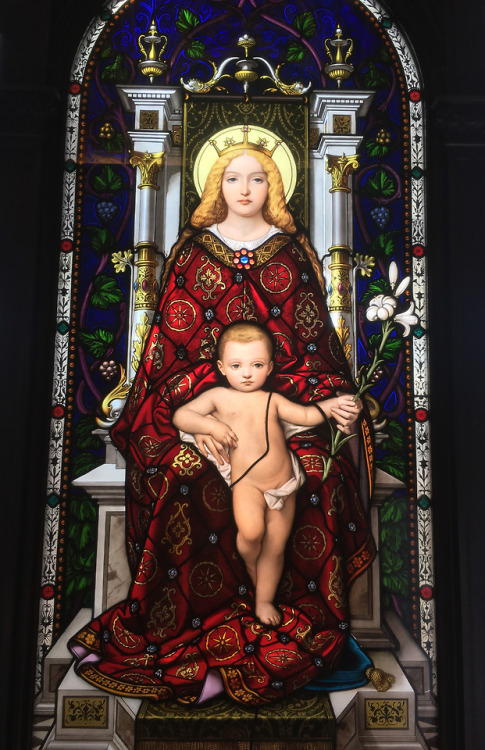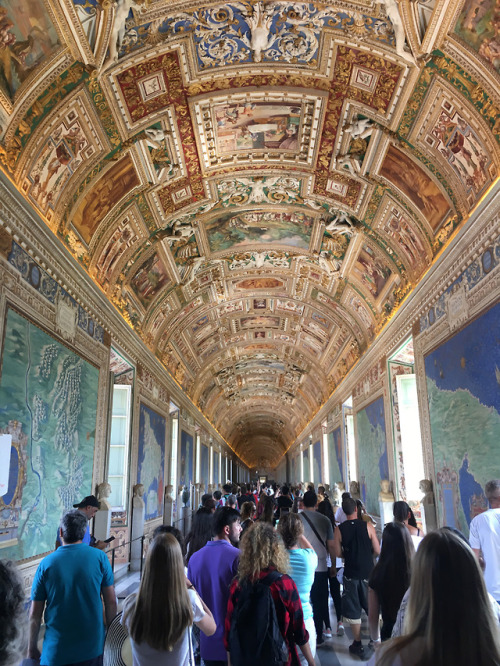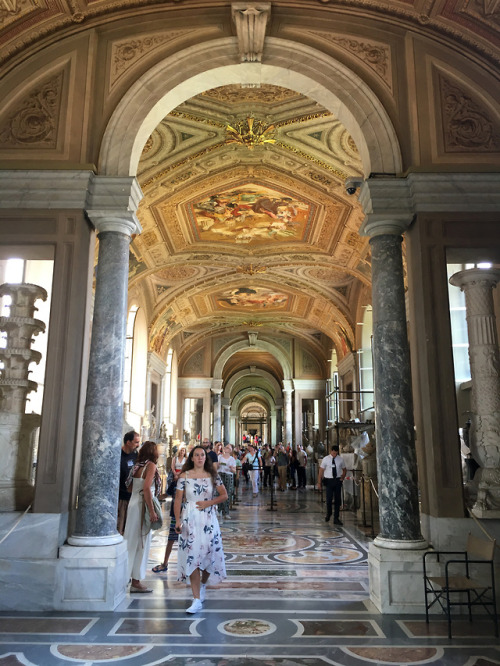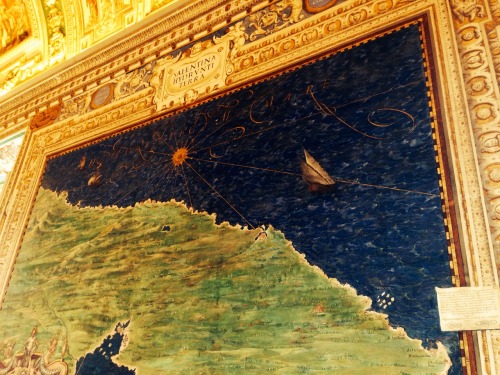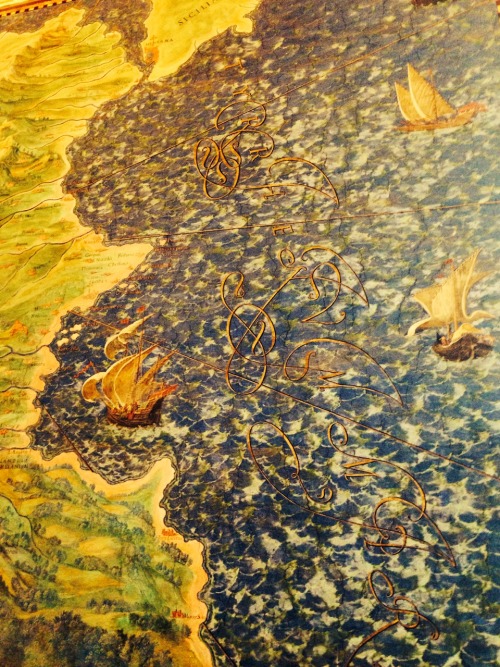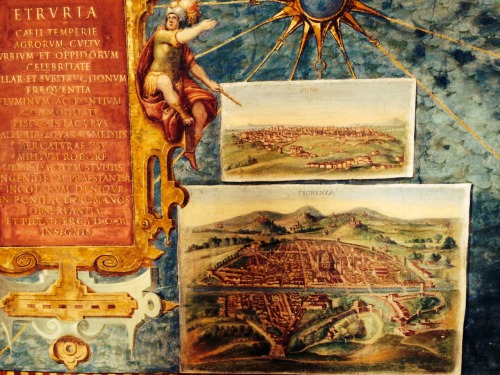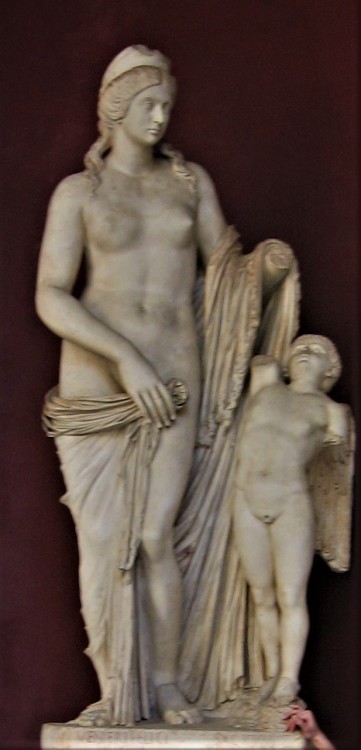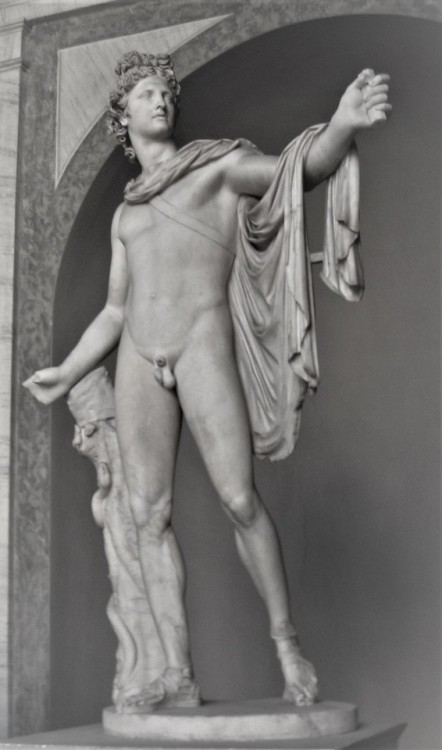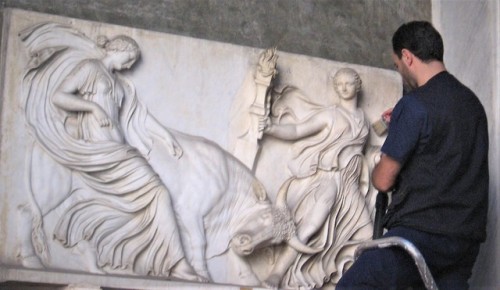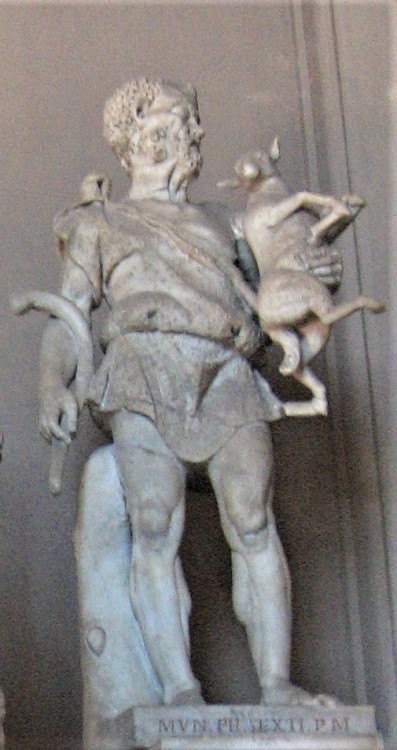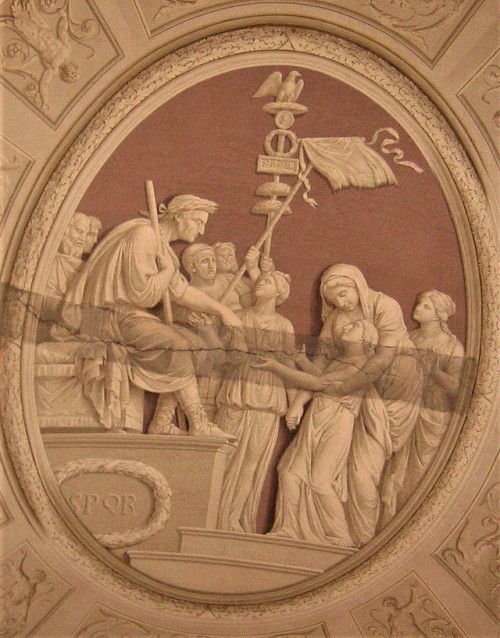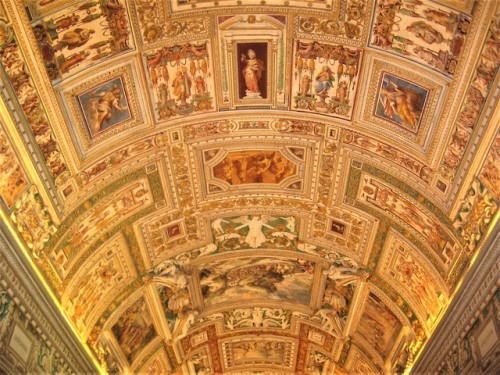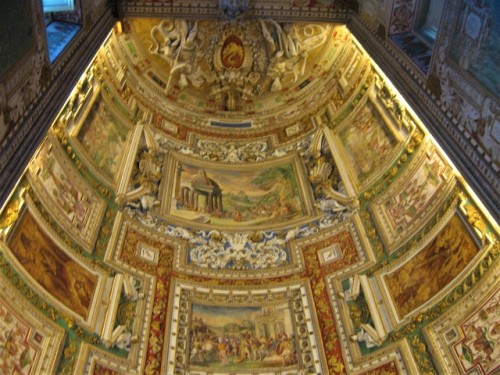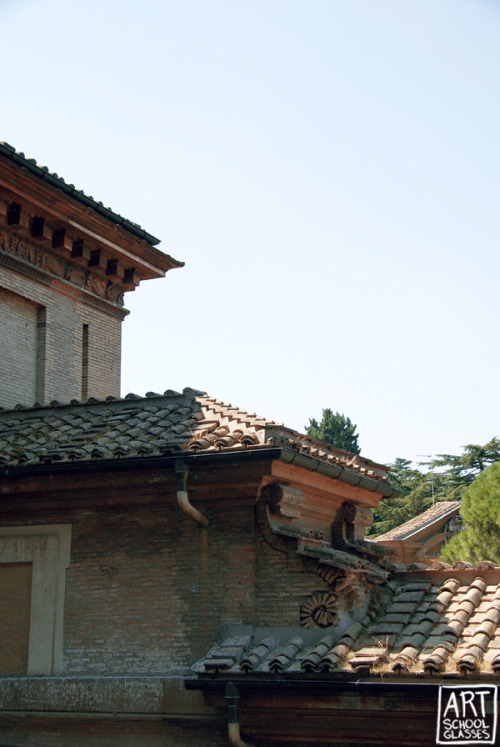#vatican museum
Saint Pius V (1566 to 1572), whose professed name was Michael, also took an interest in angels during his pontificate. His apartments in the Vatican are now part of the museums and contain the mosaic displays and Jan Matejko’s enormous oil painting of the Treaty of Vienna, but he also commissioned a little chapel, now used as a vestibule to the Sistine Chapel, where most visitors never look up to see Giorgio Vasari and Federico Zuccari’s cupola fresco, The Fall of the Rebel Angels. In this work, seven exquisite angels in pastel armor pose gracefully while skewering seven misshapen demons. Their wings suggest that these disfigured creatures were once angels, while now they are a mishmash of animal heads, tails and claws grafted onto what were once beautiful bodies. The base of the dome reveals a scorched cityscape, as buildings burn and crumble. The angels, however, come from the ring of light in the center of the dome where putti faces watch the ensuing combat.This fresco was more than a defense of Scholastic theology: Pius V excommunicated Queen Elizabeth for heresy, opposed the French Huguenots, gathered a fleet against the Ottoman Turks and resisted the internal pressures from Catholics who wanted to see the Church soften on doctrine in order to accommodate the new circumstances of the post-Reformation world. Pius responded to these challenges with the vigorous image of angels quelling rebellion, confident in serving the true light.
https://aleteia.org/2017/06/06/angels-in-art-visualizing-the-invisible/
Post link
1. The Venus Felix is a sculpture of Venus and her son Cupid. It was dedicated by Sallustia and Helpidus to Venus Felix. Its head resembles Faustina the Younger. It is now held at the Museo Pio-Clementino of the Vatican Museums, Rome, and is displayed in the Octagon of the Hermes Hall.
3. Marble relief, produced by a neo-Attic workshop and dating back to the Roman Imperial Age, recovered in the XVIII century near Naples and subsequently acquired by the Vatican Museums. The relic shows two Maenads, followers of Dionysus, beside a bull, which probably represents one of the various manifestations of the god himself. Dionysus was often called with the epithet of Eiraphiótes, a term of obscure meaning. It seems, however, that it could be referred to an animal form of the god and related to an Indo-European root, common to the Sanskrit rsabhá (“bull”), assuming in this way the meaning of “god who reveals himself in the aspect of a bull”
Post link
Michelangelo. The Creation of Adam. 1512. Fresco painting. 570 cm x 280 cm. Sistine Chapel, Vatican Museum, Vatican City.
Saved the best for last, I suppose. I was mostly trying to avoid using highly famous art works, but I had to include it as it was something that I saw in person and it inspired me quite a bit. Before seeing it in person, I had no idea that it was surrounded by many other works of art on the ceiling of the Sistine Chapel. It is pretty easily identifiable, though, even being surrounded by other masterpieces. The amazing attention to detail and skill involved in creating something like this is absolutely beautiful.
Post link



